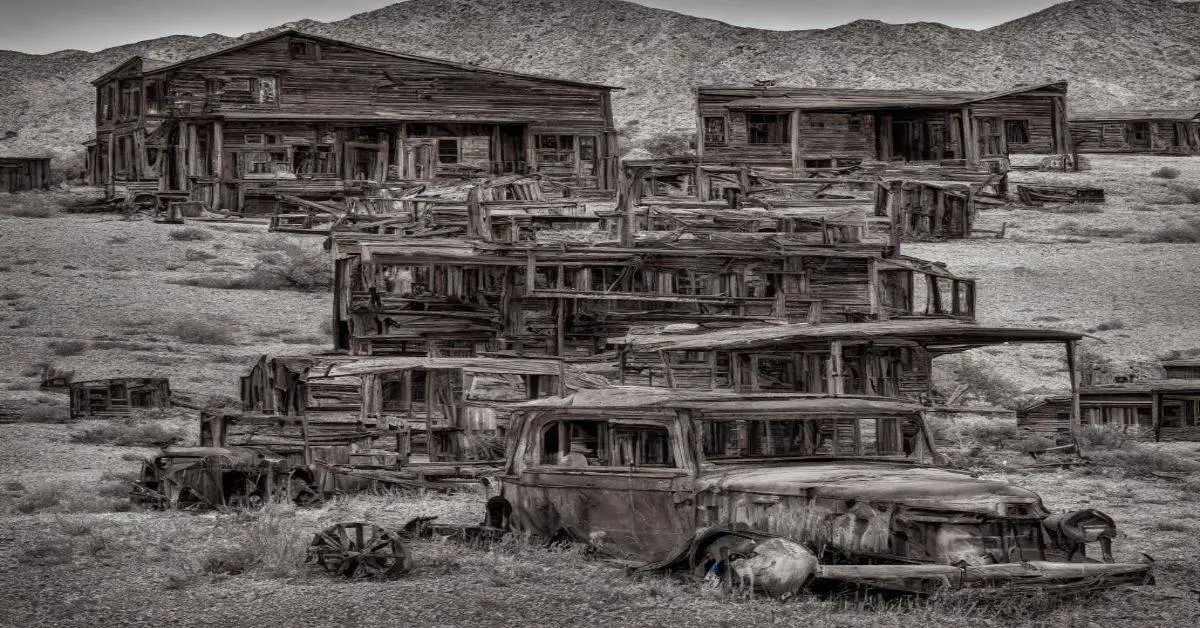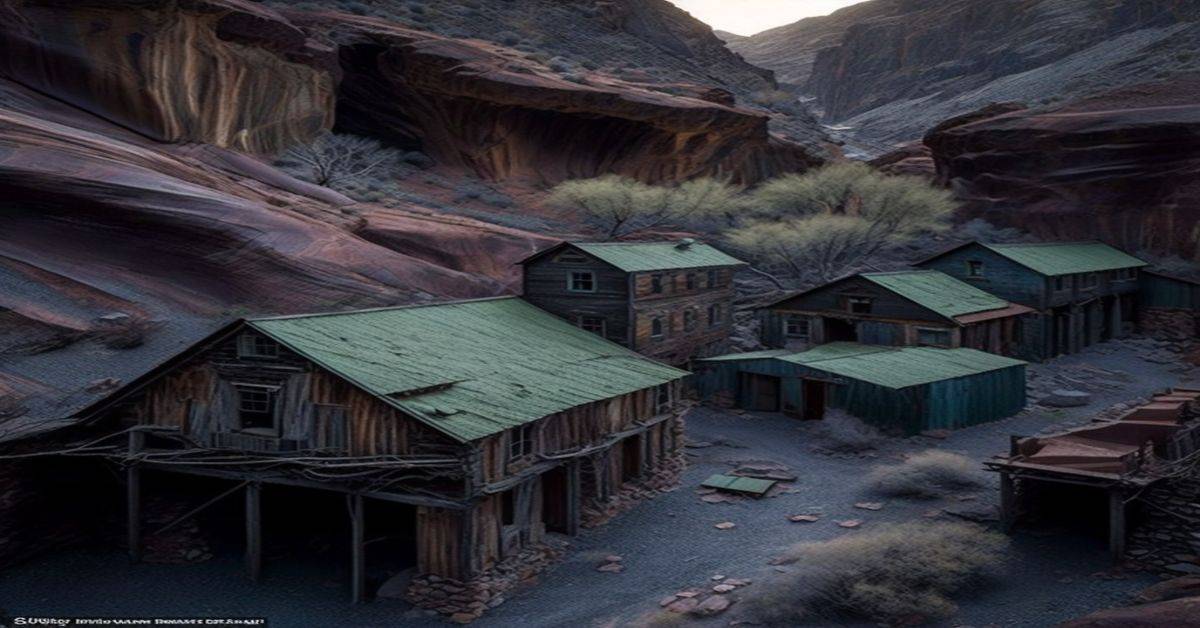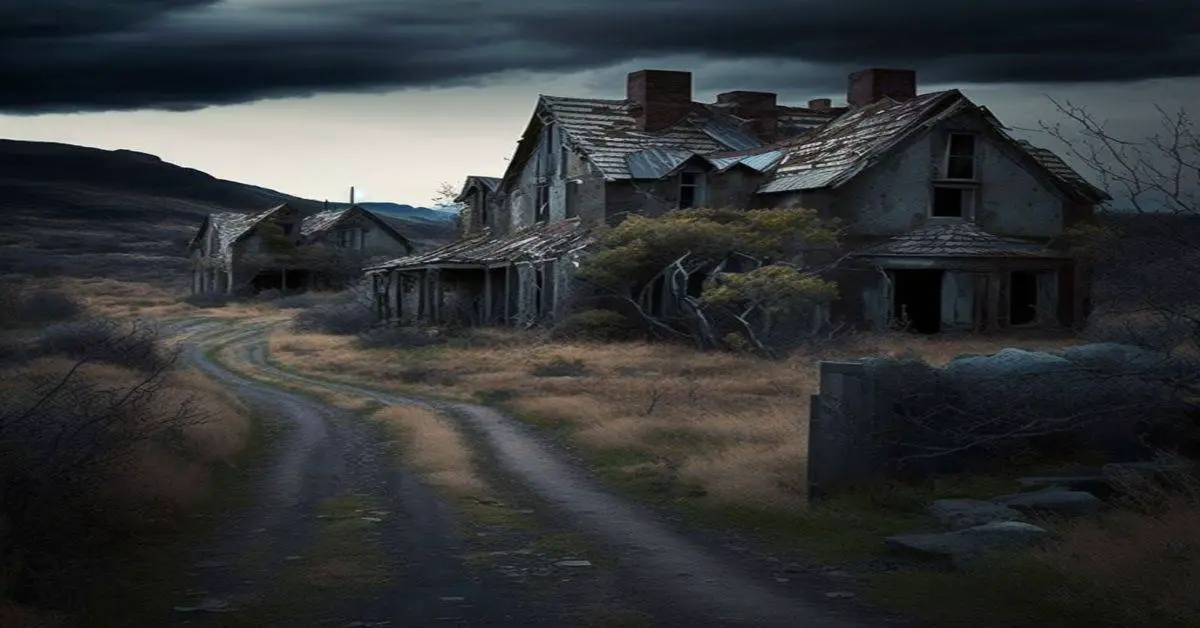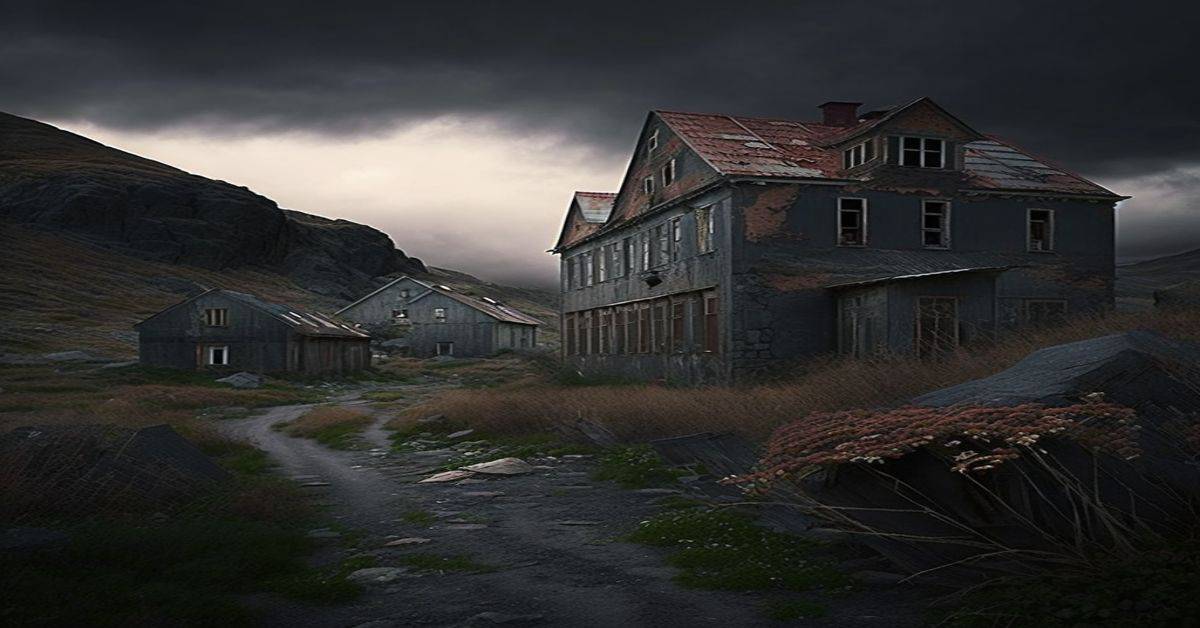Florida is a state that is experiencing tremendous growth, but its past is also rich with histories of ghost towns. These communities emerged to support various industries and were often founded near natural resources. However, many were short-lived due to the economic downturns and natural disasters that hit the state.
Resource-Based Towns
Many early Florida towns depended on natural resources such as fishing, clams, lumber, phosphate, citrus, cattle, oysters, watermelons, and celery. These towns were the backbone of the state’s economy and attracted people to settle there. Unfortunately, as the natural resources depleted, some towns had to fold, leaving no trace behind.
Boom Time Towns
During the Florida land boom of the 1920s, some towns were created for lot sales. These towns often collapsed when the land sales bust occurred before the Great Depression in 1929. As a result, many of these towns disappeared, and their remains were barely noticeable.
The Ghost Towns Today
As you drive around Florida, you might not even know that you are passing through a ghost town. Sometimes, you can spot a sign or historical marker, but most of these towns are just historical footnotes.
Acron, Florida
Founded in the 1860s near the southern boundary of the Ocala National Forest, the town’s population grew to around 300. It housed families engaged in farming and working in a sawmill and citrus groves. Although it vanished in the 1900s, the Ponceannah Cemetery near Paisley remains the final resting place of Walt Disney’s grandparents.
Aladdin City, Florida
It is in Miami-Dade County, a planned community designed around a Moorish theme in the 1920s. It was developed by a Michigan manufacturer of “kit” homes and had many problems that eventually led to its collapse after the hurricane and land boom collapse. Today, there is little left of this once-thriving city.
Allenhurst, Florida
A sport fishing town on north Merritt Island was demolished, and its residents relocated when NASA bought up most of the island for the Kennedy Space Center.
Andytown, Florida
It was a small settlement in Broward County that began as a small cafe owned by Andy Poulus. The community grew up around the intersection of US-27 and State Road 84, but it was demolished in 1979 to make way for the current interchange of Alligator Alley and US-27.
Balm, Florida
A farming community in eastern Hillsborough County existed in 1902 but has dwindled over the years. Today, not many remains of the town, but a church memorializes its name, and nearby towns include Fort Lonesome and Picnic.
Basinger, Florida
Basinger is located in Highlands County, about 10 miles northwest of Okeechobee. It was named after a fort built by Col. Zachary Taylor during the Second Seminole War. After the wars, a few cattle ranchers settled in the area, and the small town of Basinger was built on the Kissimmee River. It was prosperous and had a general store, hotels, school, and church.
However, in 1915, the railroad bypassed Basinger, and shipping stopped on the river. The town declined despite an attempt to redevelop the area in the 1920s. Today, the site is part of the Kissimmee River Restoration Project, and the Basinger Cemetery is located on the south side of US-08, just east of the Kissimmee River.
Campville, Florida
Campville, north of Hawthorne on US-301 in Alachua County, was established in the mid-1800s by the Camp family and was adjacent to their brick factory. The town, located on the railroad, boasted a sawmill, a general store, a school, and a church and had numerous residences. Today, some of the original houses and a church remain in the once-prosperous community, and there are still many bricks in the area.
Capps, Florida
Capps is a quiet place at US-19 and US-27 east of Tallahassee. It was the main headquarters of the 1,600-acre Tungston Plantation and became one of the country’s largest manufacturers of tung oil, used in varnish and paint. The Asa May house in Capps was on the Rosewood Plantation and is on the National Register of Historic Places. Asa May was a prominent cotton planter.
Eldora, Florida
Situated within Canaveral National Seashore, Eldora was established in 1876 and was once inhabited by early Native Americans and pioneering settlers. It served as a steamboat stop on the Mosquito Lagoon. The sole surviving residence in this locality is the Eldora State House, which dates back to 1913. The historic home has been renovated and is accessible to visitors, complete with a small museum featuring exhibits and photographs.
Electra, Florida
Electra, situated on the fringes of Ocala National Forest about 4 miles south of State Road 40 along Marion County Road 314A, was a settlement established in the 1840s and 1850s by several families, among them the Sellers and Griggs families.
The community, named after an ancient Greek tragedy character, primarily comprised farmers. Many sold their land to the government following the formation of the Ocala National Forest. Today, the Electra Cemetery on 314A is home to the graves of numerous members of these families.
Fort Chokonikla, Florida
In Paynes Creek Historic State Park in Hardee County, Fort Chokonikla was a trading post providing supplies to the nearby Seminole reservation. In 1849, five Seminoles attacked the post and killed the clerks, leading to the fort’s construction. However, due to the high death toll from malaria, the fort was abandoned in 1850.
Fort Dade, Florida
Fort Dade is a ghost town located on Egmont Key at the entrance to Tampa Bay, built during the Spanish American War to guard the bay’s entrance. While the town no longer exists, visitors can still see remains of the fort by taking a ferry from Fort Desoto Park.
Fort Drum, Florida
Located in Okeechobee County on US-441 between Yeehaw Junction and Okeechobee, Fort Drum was established during the Second Seminole War. Cattle ranchers later settled it after the Civil War. While the town is mostly gone, early settlers are buried in a cemetery.
Hampton Springs, Florida
Hampton Springs, located southwest of Perry on Hampton Spring Road, was known for its healing spring that fed an indoor pool. A hotel was built over the spring but burned down in 1954. Today, the Hampton Springs Hotel Historical Site marks where the hotel once stood.
Hilolo, Florida
Established in 1914 as a station on the Kissimmee Valley Branch of the Florida East Coast Railroad, Hilolo was a small town in Okeechobee County with a school, post office, and population of around 170 in 1930. When the railroad closed in 1946, the town faded away, leaving only a name at the intersection of US-441 and CR-68.
Holopaw, Florida
Holopaw was once a large lumber town in far eastern Osceola County, with a population of up to 2,000 people at its peak. However, when the timber and sawmill industries died, the town’s population dwindled, and the railroad shut down. Today, only a couple of convenience stores and a small restaurant remain, but the nearby development of Harmony offers more amenities.
Kerr City, Florida
Kerr City, located in Marion County, was founded in 1884 and served as a stagecoach stop for travelers from the St. Johns River to Ocala and back. At one time, the town had a population of 100 and boasted a hotel, general store, drug store, school, church, and post office.
The Ocala National Forest surrounds the town’s location, and before its founding, it had been a cotton plantation during the Civil War. Unfortunately, the Great Freezes of 1894 and 1895 destroyed all the citrus in the area, and most people moved out.
Kismet, Florida
Once a prosperous town in the Ocala National Forest near Lake Dorr, Kismet even had a 50-room hotel. However, things took a turn for the worse after a freeze destroyed the crops in the area. The Kismet Hotel was eventually dismantled and rebuilt in Eustis as the Grand View Hotel. Interestingly, Walt Disney’s parents were the first couple to be married in Lake County, and the wedding took place in Kismet. The nearby Ponceannah Cemetery is also the final resting place of Walt Disney’s grandparents.
Liverpool, Florida
Liverpool was a phosphate mining town on the Peace River near Punta Gorda. Founded in 1880, the town had docks on the river, a post office, a stagecoach stop, a hotel, and even a town newspaper. However, the early 1900s saw the depletion of phosphate in the area, leading to the town’s eventual demise.
Manasota, Florida
Manasota was a small town south of Venice in Charlotte County, whose main industry was the Woodmere Lumber Mill. Around 1,500 people lived here at its peak, and most worked in the mill. The mill provided most of the lumber used to build Venice. Sadly, a fire in 1930 destroyed the town, leaving only memories of its past.
Maytown, Florida
Maytown is in Volusia County and was once the intersection of two railroads that are long gone. It is in the vast wilderness between Sanford in Orlando and New Smyrna Beach. The town, at one time, had some crumbling old buildings and a few pioneer houses still standing in good condition.
Merritt Island, Florida
Merritt Island has several ghost towns, including some that disappeared after the U.S. government purchased large acreage for Kennedy Space Center and Merritt Island National Wildlife Refuge. Here is a map that shows some of them.
Muscogee, Florida
Muscogee is a ghost town in Escambia County, about 20 miles northwest of Pensacola. Founded in 1857 as a lumber town, the town once had a thriving timber industry that employed over 1,000 people. However, after the timber was harvested, the town and its 2,000 acres were sold to a turpentine company in 1928. Since then, the town has slowly died out and is now just a memory.
Old Venus, Florida
Old Venus was once a bustling little town of ranchers, cattle raisers, farm workers, and turpentine workers in Highlands County south of Lake Placid. Although most old towns burned down years ago, a few crumbling buildings remain there. While several people live in newer homes in the vicinity, the memories of this old ghost town continue to linger.
Oslo, Florida
Located in Indian River County south of Vero Beach, Oslo was originally settled by Scandinavians and was a pineapple and citrus center. Unfortunately, when the pineapple market collapsed, and the Great Depression hit, the town slowly died out. Although some old houses are scattered, nothing else remains except the original settlers’ names and family names.
Otahite, Florida
Located near the unincorporated community of Baker in Okaloosa County, Otahite was originally an Indian settlement that eventually developed into a hub for trading crops and other goods transported through the town.
“Otahite” originates from the Indian word for “damp place.” Although the town had a post office established in 1880, it gradually diminished over time. Its former site is now incorporated into the Blackwater State Forest, situated northeast of Pensacola.
Picnic, Florida
Picnic, also known as Hurrah, is a small community located at the intersection of County Road 39 and County Road 672 (Balm-Picnic Road) in Hillsborough County. Early settlers used to gather at this location for picnics and fish fries, hence the name. Although the town has long been abandoned, the grocery store at the corner still carries the name.
Picolata, Florida
Picolata, located south of Jacksonville, was once a bustling town that began as a Spanish fort in the 18th century. It was a ferry crossing for the St. Johns River and connected to St. Augustine by a primitive railroad.
Pine Level, Florida
Pine Level, located west of Arcadia, was known for its rowdy behavior and frequent gunfights. It was the county seat of Manatee County before becoming the first county seat of the newly formed DeSoto County.
Punta Rassa, Florida
Punta Rassa was a cattle shipping town that grew important during the Seminole Wars, the Civil War, and the late 1800s when Florida cattle were shipped to Cuba and other places worldwide. Cattle were driven from ranches all over Florida to this destination. Today, the old town is gone, but the name still exists.
Rollestown, Florida
Rollestown was founded by a wealthy Englishman, Denys Rolle, in 1765. He brought in indentured servants, including some criminals, but most skipped town and moved to St. Augustine or other southern cities. He later replaced them with African slaves, but the plantation and town ultimately failed.
Stiltsville, Florida
Stiltsville was a village on stilts in Biscayne Bay off Miami and Key Biscayne. It was a weekend retreat for boating revelers and had around 30 homes at its height. Today, only seven homes remain, maintained by the National Park Service.
Tocoi, Florida
Tocoi, located on the east side of the St. Johns River, was once a bustling town that served as the western terminus of a railroad connecting it to St. Augustine. In the 1870s, people would travel to Tocoi on the river to get to St. Augustine quickly. However, when Henry Flagler extended the railroad from Jacksonville to St. Augustine, Tocoi began to fade. A sister town, West Tocoi, also became a ghost town after transferring rail passengers to Tocoi by ferry.
Vineland, Florida
Vineland, in Orange County, was once a thriving community with houses, a school, a railroad depot, a church, and a cemetery. However, it was abandoned in the 1960s and is now part of the Lake Buena Vista area surrounded by the Walt Disney World Resort. Although the town is gone, many roads in Orange County still carry the Vineland name.
Yukon, Florida
Yukon, located in Duval County near Naval Air Station Jacksonville, was established in the 1800s and was initially called “Blackpoint Settlement.” The town was modernized with paved streets and houses, but it was closed in 1963 due to safety concerns raised by the Navy. However, many old buildings, including the Yukon Baptist Church, remain.
Zion, Florida
Zion was a small community that housed the Orange Grove House of Refuge near Atlantic Avenue in Delray Beach. There were several such shelters along the coast, but this one was discontinued in 1896, and the growth of Delray Beach eventually swallowed up Zion.



